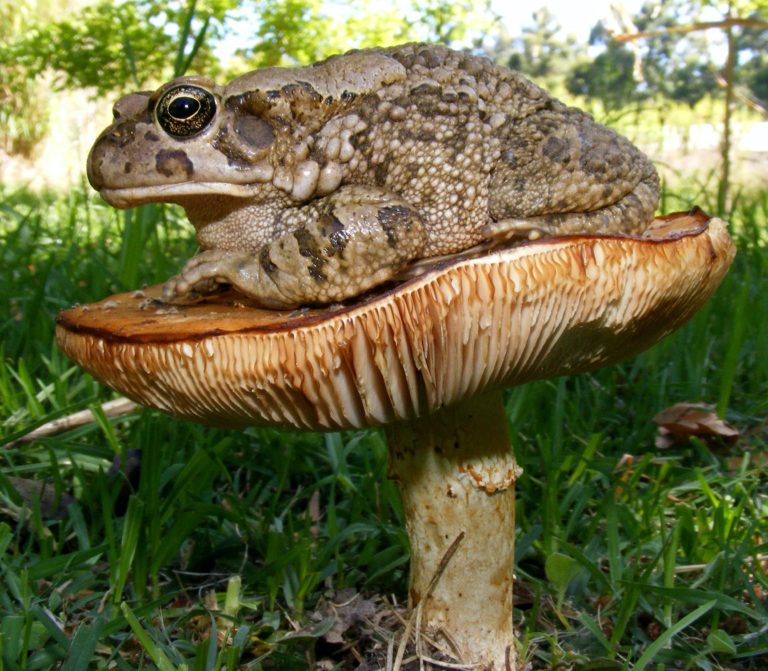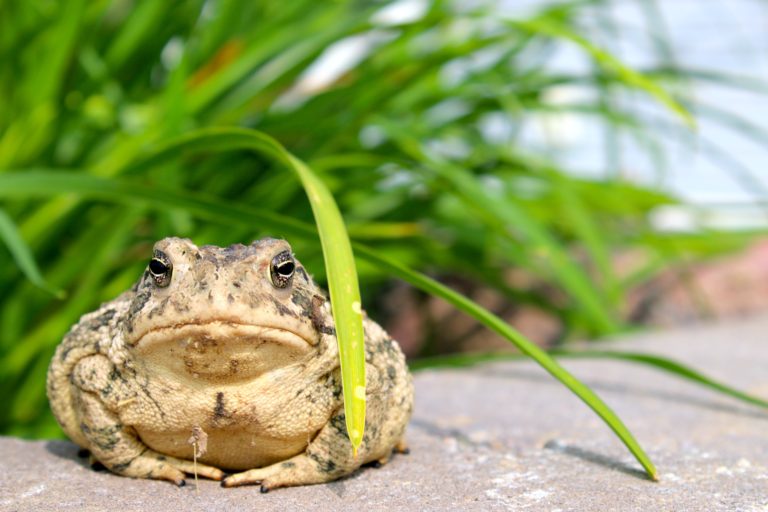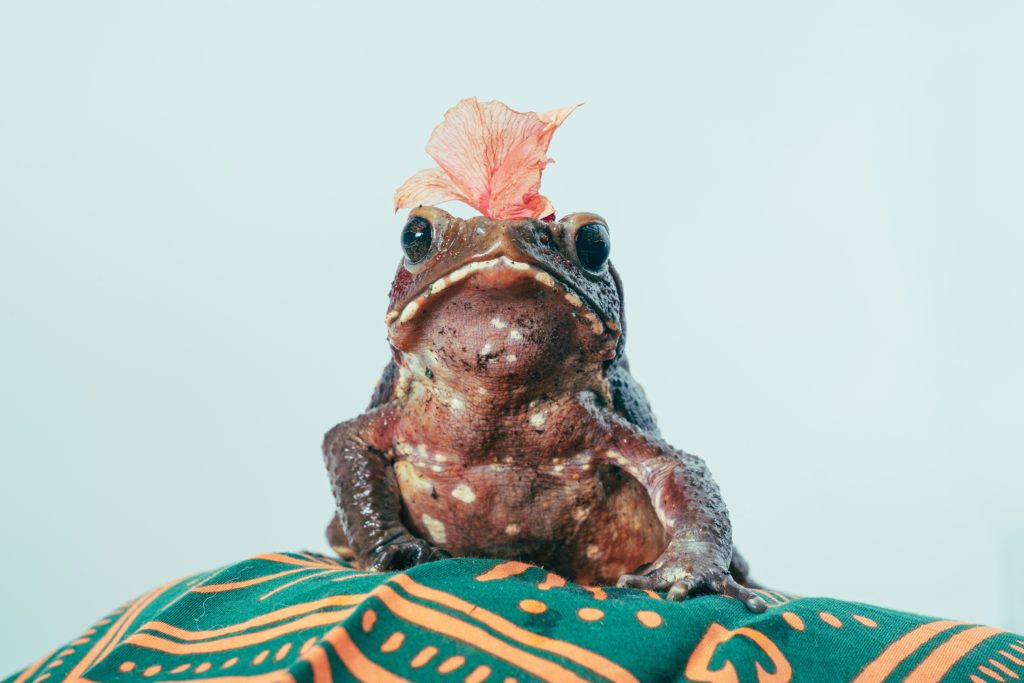Warning : this article is in no way intended to encourage drug use. Its aim is to provide information on certain (curious) practices and the scientific research behind them.
On a hot summer’s night, overcome with insomnia, I went out onto the terrace and saw ? A common toad(Bufo bufo), straddling the open doorway. Seeing each other, we stood still to better observe each other, he observing the danger, and I not wanting to disturb the charming animal.
My whimsical mind wondered “what if I tried to kiss her ? Maybe fairy tales know more than I do ?” The mere utterance of this thought obviously sent him fleeing as I tried to approach.
Especially since it wouldn’t be the brightest idea I’ve ever had. The skin of toads is in fact covered with a mucus particularly rich in toxic substances, to defend them against predators. Without these toxins, toads would be fragile, delicate and particularly vulnerable. That’s why we recommend washing your hands after touching a toad*, to avoid ingesting these toxins.
I seemed to remember that the toads that turn into Prince Charming in fairy tales had something to do with these molecules. So, rather than witnessing a magical transformation, the princess would experience a psychedelic journey, caused by the toad’s toxins coming into contact with her mucous membranes. Similarly, it seemed to me that toads were particularly linked to witches because of the same molecules, generally classified as toxic poisons when they are also said to be psychedelic**.
After a little research, my illusions about our beloved common toad were replaced by a certain fascination with other toad species, notably Incilius alvarius (formerly Bufo alvarius), whose venom does indeed contain psychoactive substances. As for the common toad, it protects itself with molecules that would cause violent digestive, nervous and cardiac disorders if ingested, so don’t even think about trying !

Bufotoxins are a large family of molecules found in the parotid glands, skin and venom of certain toads. Depending on the species, different molecules will predominate. However, toads do not have a monopoly : other amphibians, as well as certain species of plants and fungi, also produce !
Incilius alvarius is the toad best known for its psychoactive secretions. Some people even go so far as to lick it, which is particularly unadvisable, as you’re ingesting molecules that will at the very least cause serious indigestion, if not cardiac and neurological disorders.
Others “milk” the toad’s parotid glands to secrete venom rich in psychoactive molecules, notably 5-MeO-DMT and 5-HO-DMT. These molecules are analogous to DMT, the psychoactive molecule in ayahuasca and many similar ritual preparations. The venom is then dried and smoked to induce a psychedelic trip similar to ayahuasca, but of shorter duration.
DMT is found physiologically in small quantities in the human body, which leads us to assume that it has some function as a neurotransmitter. It has also been hypothesized that this molecule is important in the experience of dreams, and that its secretion is maximal at the moment of death.
Möckel writes of the psychedelic experience with DMT, “Nothing can prepare you for this experience ! The ordinary world is instantly replaced by a foreign one. The ego dissolves and appears in bizarre worlds until out-of-body experience or loss of consciousness. This leads to strong optical hallucinations, kaleidoscopic patterns, “everything goes at the speed of light”, with a shifted perception of time. The experience can take place between heaven and hell.”

* Like all amphibians, toads need to keep their skin moist at all times to be able to breathe. They absorb most of their oxygen through the skin! So don’t touch it unless your hands are thoroughly wet and clean! What’s more, all amphibians are protected in Switzerland. So don’t handle them except to save them from immediate danger, and don’t take them out of their natural environment and put them in your home (this also applies to children and tadpole farms).
** Don’t forget Paracelsus’ famous phrase “the dose makes the poison”! Everything can be useful, everything can be poisonous, it’s just a question of dosage.
https://www.erowid.org/animals/toads/toads.shtml and linked pages
https://en.wikipedia.org/wiki/Bufotenin
https://fr.wikipedia.org/wiki/Bufotoxine
https://fr.wikipedia.org/wiki/Crapaud_commun
https://fr.wikipedia.org/wiki/Dim%C3%A9thyltryptamine
Hostettmann, K. Drugs of natural origin. Editions Favre, 2018.
Hostettmann, K. All about natural poisons. Editions Favre, 2006.
Möckel, C. Journey of consciousness towards healing. Edition Solanacée, 2022.
The Swiss foundation ALPS (Awareness Lectures on Psychedelic Science) organizes conferences on research into psychedelic-assisted therapies. I was lucky enough to attend their convention in 2022 and found every lecture fascinating. You can follow them on their YouTube channel, where they rebroadcast their conferences in their entirety.
